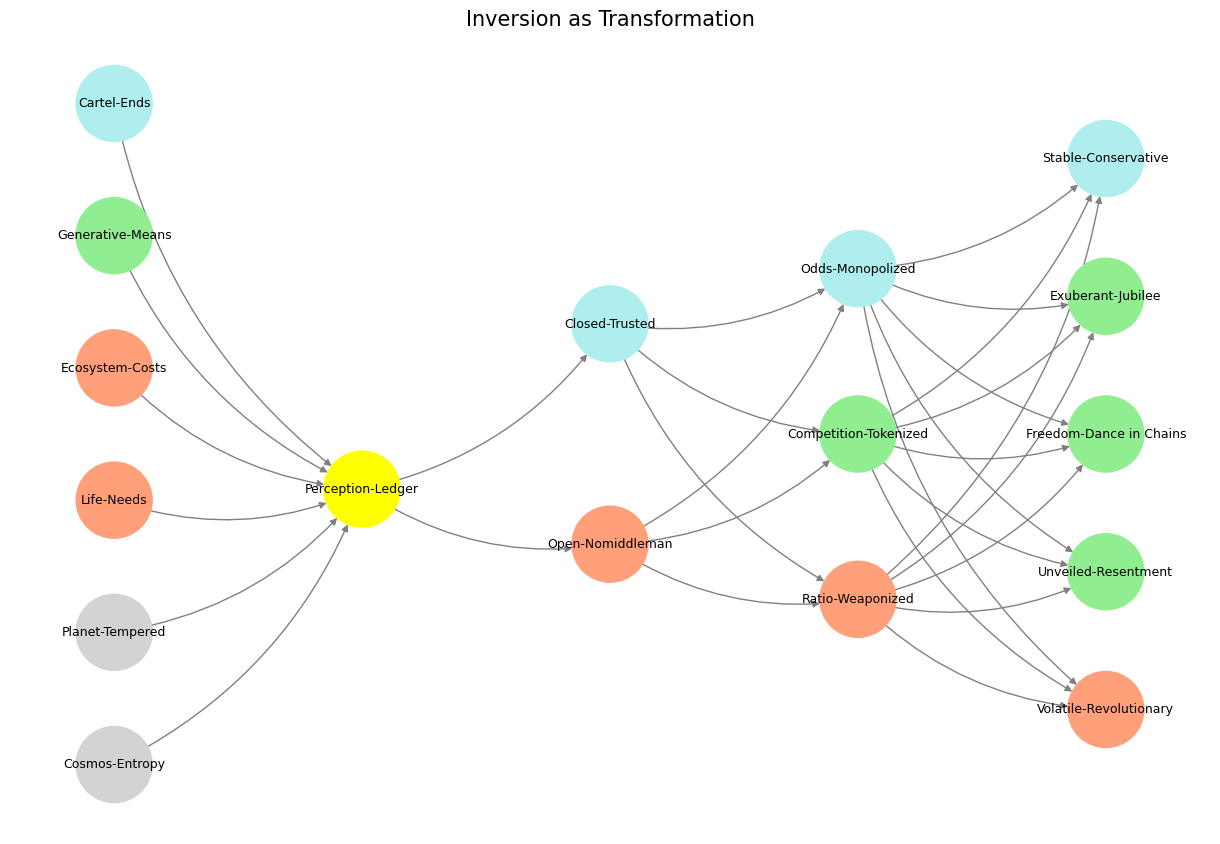(dancing-in-chains)
Dancing in Chains#
In The Various Flavors of Coffee, Anthony Capella crafts an intricate narrative around seemingly trivial details—coffee and its flavors—and elevates it to a study of life’s complex interplay of indulgence, identity, and power. His prose, in the Wildean tradition, luxuriates in descriptions that flirt with superficiality yet contain layers of deeper meaning. The very act of describing coffee, its taste, aroma, and cultural significance, becomes a metaphorical exploration of the human condition, drawing connections across life’s contradictions and tensions.
The book’s structure, anchored in the protagonist’s engagement with coffee, mirrors the thematic framework of your JupyterBook chapters, moving from “Life” and “Ecosystem” to “Resilience.” Coffee, as Capella depicts it, is not just a beverage but a nexus of social, economic, and personal transformations. It evokes Dionysian excess—a sensual pleasure that disrupts the mundane—and simultaneously reflects Promethean ingenuity, as coffee emerges as a driver of intellectual and cultural awakening. The protagonist’s journey mirrors this duality, oscillating between moments of hedonistic surrender and pragmatic innovation.
Fig. 28 Tokenization: 4 Israeli Soldiers vs. 100 Palestenian Prisoners. A ceasefire from the adversarial and transactional relations as cooperation is negotiated.#
Capella’s evocation of the slave trade scene further complicates the narrative’s engagement with historical contexts of exploitation. By framing the trade through Bey’s perspective, the novel critiques yet tactfully navigates the delicate topic of slavery. The agency afforded to Fikre—perhaps more symbolic than entirely plausible—offers a counterpoint to the dehumanizing commodification she endures. This interplay of agency and oppression mirrors your thematic division between “Transvaluation” and “Revolution.” Capella deftly weaves these threads into a narrative that critiques systems of domination while highlighting individual acts of resistance, echoing Nietzsche’s concept of revaluing values.
The Wildean flourish with which Capella describes the slave trade avoids moralistic didacticism, instead presenting a tableau of contradictions. The refinement of the harem’s educational system—where girls are trained in mathematics, music, and chess—contrasts sharply with the brutal realities of their commodification. This duality echoes your framework’s themes of “Freedom-in-Fetters” and “Dancing-in-Chains,” encapsulating the tension between imposed limitations and self-expression within those constraints. Just as Wilde might delight in the paradox of pleasure derived from trivialities, Capella finds in coffee and its cultural entanglements an arena for profound moral and philosophical reflection.
Capella’s style also resonates with the “Tokenized ⚓️” framework, as coffee becomes a symbol of global trade, cultural exchange, and economic power. The protagonist’s journey through the coffee trade parallels his moral and existential reckoning. This tokenization is echoed in the depiction of the slave trade, where human lives are reduced to commodities, yet their stories resist complete erasure through the narrative’s insistence on individuality and nuance. Fikre’s character is emblematic of this tension, embodying both the constraints of her social role and the defiance of her personal choices.
Ultimately, The Various Flavors of Coffee evolves from Wildean indulgence to a more nuanced exploration of societal structures and human agency. Capella’s prose, rich with sensory detail, invites readers to savor the surface pleasures of the narrative while probing the bitter complexities beneath. By threading these themes through the lens of coffee, Capella transforms a seemingly trivial subject into a profound meditation on life, much like your JupyterBook framework seeks to draw out the deeper significance of interconnected ideas.
Show code cell source
import numpy as np
import matplotlib.pyplot as plt
import networkx as nx
# Define the neural network fractal
def define_layers():
return {
'World': ['Cosmos-Entropy', 'Planet-Tempered', 'Life-Needs', 'Ecosystem-Costs', 'Generative-Means', 'Cartel-Ends', ], # Polytheism, Olympus, Kingdom
'Perception': ['Perception-Ledger'], # God, Judgement Day, Key
'Agency': ['Open-Nomiddleman', 'Closed-Trusted'], # Evil & Good
'Generative': ['Ratio-Weaponized', 'Competition-Tokenized', 'Odds-Monopolized'], # Dynamics, Compromises
'Physical': ['Volatile-Revolutionary', 'Unveiled-Resentment', 'Freedom-Dance in Chains', 'Exuberant-Jubilee', 'Stable-Conservative'] # Values
}
# Assign colors to nodes
def assign_colors():
color_map = {
'yellow': ['Perception-Ledger'],
'paleturquoise': ['Cartel-Ends', 'Closed-Trusted', 'Odds-Monopolized', 'Stable-Conservative'],
'lightgreen': ['Generative-Means', 'Competition-Tokenized', 'Exuberant-Jubilee', 'Freedom-Dance in Chains', 'Unveiled-Resentment'],
'lightsalmon': [
'Life-Needs', 'Ecosystem-Costs', 'Open-Nomiddleman', # Ecosystem = Red Queen = Prometheus = Sacrifice
'Ratio-Weaponized', 'Volatile-Revolutionary'
],
}
return {node: color for color, nodes in color_map.items() for node in nodes}
# Calculate positions for nodes
def calculate_positions(layer, x_offset):
y_positions = np.linspace(-len(layer) / 2, len(layer) / 2, len(layer))
return [(x_offset, y) for y in y_positions]
# Create and visualize the neural network graph
def visualize_nn():
layers = define_layers()
colors = assign_colors()
G = nx.DiGraph()
pos = {}
node_colors = []
# Add nodes and assign positions
for i, (layer_name, nodes) in enumerate(layers.items()):
positions = calculate_positions(nodes, x_offset=i * 2)
for node, position in zip(nodes, positions):
G.add_node(node, layer=layer_name)
pos[node] = position
node_colors.append(colors.get(node, 'lightgray')) # Default color fallback
# Add edges (automated for consecutive layers)
layer_names = list(layers.keys())
for i in range(len(layer_names) - 1):
source_layer, target_layer = layer_names[i], layer_names[i + 1]
for source in layers[source_layer]:
for target in layers[target_layer]:
G.add_edge(source, target)
# Draw the graph
plt.figure(figsize=(12, 8))
nx.draw(
G, pos, with_labels=True, node_color=node_colors, edge_color='gray',
node_size=3000, font_size=9, connectionstyle="arc3,rad=0.2"
)
plt.title("Inversion as Transformation", fontsize=15)
plt.show()
# Run the visualization
visualize_nn()


Fig. 29 G1-G3: Ganglia & N1-N5 Nuclei. These are cranial nerve, dorsal-root (G1 & G2); basal ganglia, thalamus, hypothalamus (N1, N2, N3); and brain stem and cerebelum (N4 & N5).#

